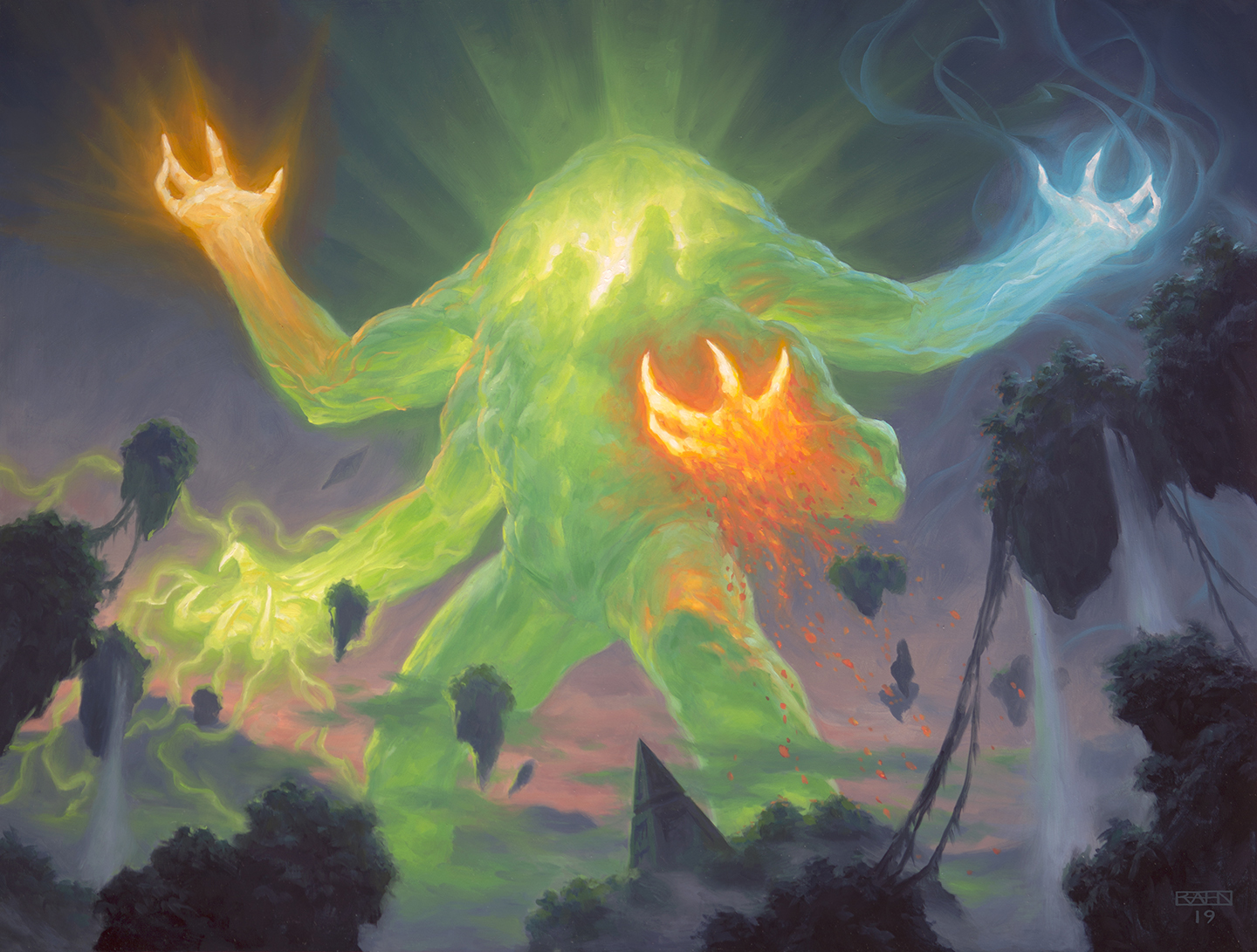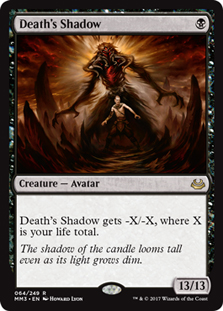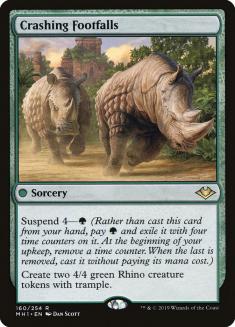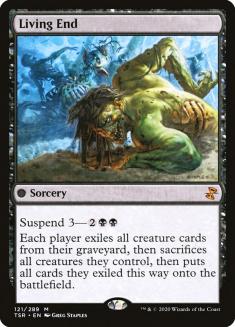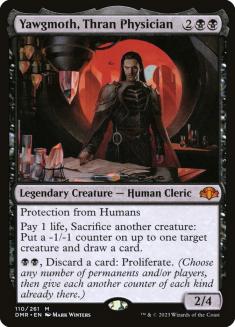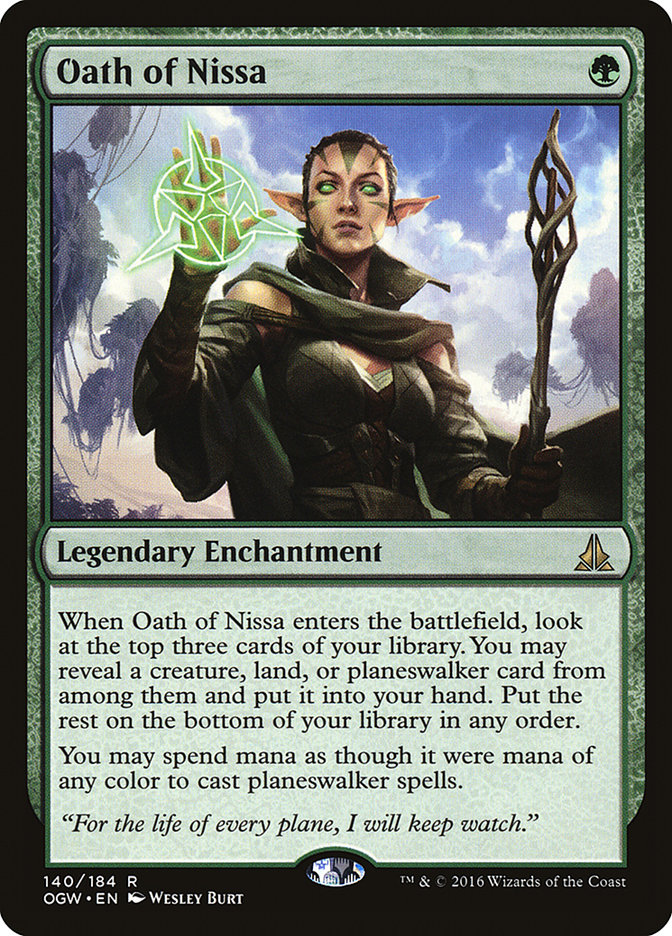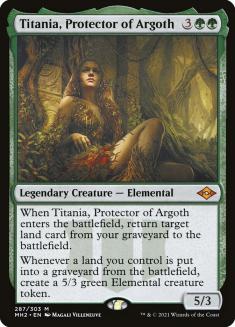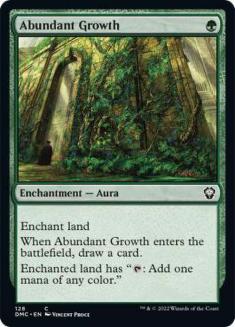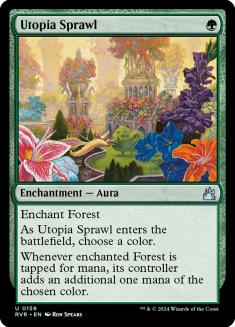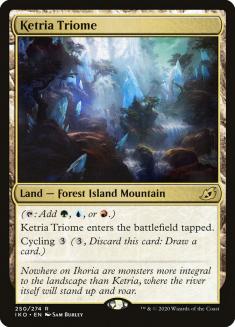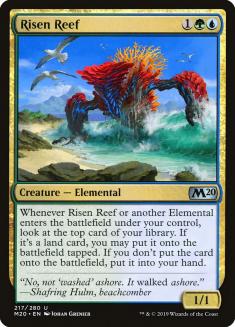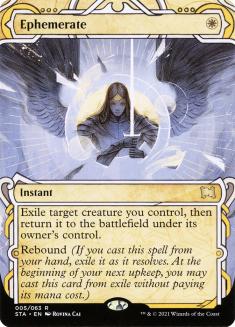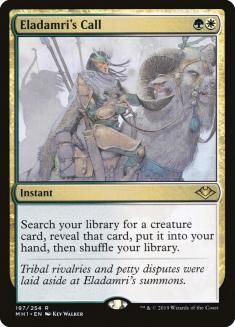Hey, what’s up, everyone! Today I’m about the Modern metagame, how I got onto Four-Color Elementals, and the changes I want to make to this powerful deck moving forward. Let’s jump into it!
First, let’s take a look at the Modern metagame after the Lurrus of the Dream-Den ban. The ban really affected the top decks much more than I thought it would have. I thought Grixis Death’s Shadow was going to live on and I would be able to dance with the Shadows of Death for a good while longer. I was wrong.
What ended up happening was the Cascade decks ended up gaining the most from this ban. The dominance of Grixis Death’s Shadow suppressed Living End and Temur Crashcade. Now, you may be asking yourself, “Why not just play Death’s Shadow now if those are still the big decks?” That is what I said to myself right away as well. Unfortunately, what happened to the rest of the metagame to answer these cascade decks was not friendly to the Shadow of Death. Every deck started to play Chalice of the Void, Endurance, and Teferi, Time Raveler. All of those cards are also great against Grixis Death’s Shadow.
This left me feeling lost and so very cold without any Modern deck that I love in sight. I poured my heart and soul into that wretched Nightmare Cat. With it gone, I had tough choices to make with only one week before SCG CON Dallas.
Discovering Four-Color Elementals
One thing I know I wanted to play was 4 Teferi, Time Raveler. The powerful planeswalker is just at such a great place right now. That left me with a handful of choices. I could play a deck like Azorius Control or Four-Color Omnath, but I just didn’t have time to get the proper reps in and I didn’t feel like I could play it at the highest level. So, after briefly considering Azorius Hammer and Izzet Midrange splashing Teferi, I stumbled on this list by AndyAWKWARD.
Creatures (19)
- 1 Eternal Witness
- 1 Titania, Protector of Argoth
- 4 Risen Reef
- 4 Omnath, Locus of Creation
- 4 Solitude
- 1 Endurance
- 4 Fury
Planeswalkers (8)
Lands (30)
Spells (23)

This list got me really excited because it checked a lot of boxes for me. It played Teferi, it had a proactive and powerful gameplan, and it was doing something slightly different from what people were expecting. The top decks were filled with hate cards like Spell Pierce and Mystical Dispute, and sometimes these cards were even in the maindeck. Risen Reef backed up by Cavern of Souls did not care about those hate cards at all. I felt like I’d found my deck.
Fast forward to the main event for the 30K, and I ended up submitting a bit of a different list, but one I was proud of.
Creatures (20)
Planeswalkers (8)
Lands (30)
Spells (22)

The one thing I wasn’t proud of was my result in that event. I finished the event quite early with a disappointing 2-3 record to end my main event run. While I played against some off-the-wall decks, my deck also just didn’t feel functional. I was blaming it on unlucky variance, but still trying to be realistic about the chance that I wasn’t playing a good deck.
The Redemption
I was eating lunch thinking about what I wanted to play for the SCG 10K the following day, and I saw a sign from the Magic Gods, or at least a Magic deity, Autumn Burchett, who Tweeted this out:
This was all the sign I needed to give Elementals one more chance. I figured, if Autumn was crushing with the deck, there had to be something there, and maybe my list just wasn’t quite up to snuff. So, I ended up copying her list with a few minor changes and ran it back for the 10K.
Creatures (20)
- 1 Magus of the Moon
- 1 Titania, Protector of Argoth
- 2 Ice-Fang Coatl
- 4 Risen Reef
- 4 Omnath, Locus of Creation
- 4 Solitude
- 1 Endurance
- 3 Fury
Planeswalkers (8)
Lands (31)
Spells (21)

This event went much better for me. I ended up only losing one match in the Swiss to a great player playing Izzet Midrange. This player also connected with Ragavan a few times and always found great spells to cast off the top of my deck. I was okay with that variance. But the one thing I never played against was any kind of Cascade matchup, which was both surprising and disappointing, considering all the sideboard cards that I had for the matchup.
The Top 8
That all changed once I got to the Top 8. In my quarterfinals, I got smashed Game 1 by Living End and proceeded to draw a good amount of Endurance; Teferi, Time Raveler; and the very spicy Chalice of the Void, which was an all-star for me. I then proceed to find out how good a matchup Temur Crashcade was for me in the semifinals. The combination of the same hate cards that carry over from Living End and the fact that I can just kill every Rhino they presented to me with Fury + Ephemerate led me to a quick finals appearance.
This is where I met Steven Yean, a nice young man who played Golgari Yawgmoth at an extremely high level. We had three awfully close games that ended up going his way after a most unfortunate (for me) Grist, the Hunger Tide milling over another Grist, which put the powerful planeswalker out of reach from my Fury.
If you want to rewatch any of my matches over the weekend, you can find my VOD’s on my Twitch page.
Past and Future
After such a strong performance in a large field of 296 people, I once again had confidence in the archetype thanks to Autumn. With a great finish under my belt and some research online, I found out some interesting things. First, Four-Color Elementals posted the highest win rate in the 30K with decks over five copies.
I also saw some bold claims online that the deck has “no bad matchups and all positive win rates.” While that is absurd, it does paint a picture about why I choose to play the deck. It is powerful and proactive, and it has game against everything. That is what Grixis Death’s Shadow was for me, and that is the type of Modern Magic I like to play. Modern is a highly skill-intensive format when you play a deck that has a ton of decision points. This rewards the players who love Modern and put a ton of time into the format.
Now let’s get to what I would play moving forward!
Creatures (19)
- 1 Magus of the Moon
- 2 Ice-Fang Coatl
- 4 Risen Reef
- 4 Omnath, Locus of Creation
- 4 Solitude
- 1 Endurance
- 3 Fury
Planeswalkers (8)
Lands (31)
Spells (22)

What’s Different?
Now, this isn’t terribly different from what Autumn played, but there are clear changes. First, Oath of Nissa was excellent for me all weekend. Being able to cast it on Turn 1 and cast Wrenn and Six off a Cavern came up a decent amount of time. Four-Color Elementals (Yorion) is filled with lands, creatures, and planeswalkers, so it really makes sense.
Oath of Nissa also has quite the ability against other Blood Moon decks, and it even combos with the Magus of the Moon that we have in the maindeck. All of those applications, mixed with the ability to bounce it with Teferi, Time Raveler and blink it with Yorion, Sky Nomad, make this card a slam dunk in the deck. The only reason I wouldn’t play four is that it is legendary.
The other big change was getting rid of Titania, Protector of Argoth. This was a tough one to adjust because the card is insane when it works. The problem is it’s a very fragile creature for a five-drop and it just never really felt like it changed the game unless I was playing against a resource-light deck like Jund or Grixis Death’s Shadow. It is a really fun card, but it felt like a bit of a meme to me.
Unholy Heat also really impressed me. Being able to kill large creatures like Murktide Regent and Omnath, Locus of Creation is vital, even if you don’t have the most reliable deck for getting delirium.
Now let’s talk about some of the deck’s interactions so you can pick up this deck and not make the same mistakes that I did early on.
Making Mana
If you have Abundant Growth in your opening hand, you want to fetch out a Forest for it. This case does change if you are up against a Blood Moon deck. You actually want to strap up your nonbasic lands to still give you the max amount of colored mana. Blood Moon is not very good against us, but people will still bring it in against us.
If you have Utopia Sprawl, you want to strap it to a Temple Garden, Stomping Ground, or Breeding Pool. One of my favorites is to get a Breeding Pool and name white. But if you have Wrenn and Six as your Turn 2 play, you might want that land tap for green and red. But outside of the Wrenn and Six draws, your common play is to have Bant colors on Turn 1 so you can cast Risen Reef or Teferi, Time Raveler on Turn 2.
If you do not have a one-drop, it’s best to get one of the Triomes to start followed by a dual of some kind. My go-to combination was always Ketria Triome and Temple Garden, but I did adjust that if I had a lot of Prismatic Endings and Ephemerates. Then I would go to Raugrin Triome and Temple Garden.
Now, when it comes to matchups where the one of Magus of the Moon is a factor, you have to be a bit careful what you search for. You still usually start with a Triome followed by a dual, but then you really have to plan out a few turns in advance to figure out what combination of basics you want. That is low-key the hardest part about playing this deck.
Risen Reef
Now we are on to the interactions with Risen Reef. Risen Reef is completely insane in this deck with the pitch creatures. If you can, wait to deal with creatures with Solitude and Fury until you can cast a Risen Reef. With Risen Reef out, you can pitch a card, but then you get a card back off the interaction with Reef. If you add Ephemerate to the equation, then you actually net a card after it rebounds.
This is the power of the deck. If you are up against a Ragavan deck with a bunch of removal (Jund, Grixis Death’s Shadow, Izzet Midrange), you might just have to deal with Ragavan instead of trying to set up any Risen Reef triggers because it is unlikely your creature will live. But if you have Solitude instead of Fury, you can sometimes set it up in response to Risen Reef dying.
Omnath, Locus of Creation
Time to talk about the best and sometimes the toughest card to play in the deck: Omnath, Locus of Creation. This is the powerhouse of the deck and one of the most powerful cards in Modern right now.
If it comes to Turn 4 against a deck that plays good removal for Omnath, Locus of Creation, I usually like to hold off on casting Omnath until Turn 5. If I have multiple copies, then I jam on Turn 4 because it is a win-win. They will either kill your first copy and you get to cast another one, or you get to untap with Omnath, Locus of Creation and likely have access to nine mana.
Now we get to the fun part, what to do with nine mana. This is where the big bad Bird shows up. It’s near-always correct to cast Yorion, Sky Nomad after you get a ton of mana with Omnath, Locus of Creation because of the value you get with the card. The scenarios where you don’t cast Yorion is when you are up against heavy-counterspell decks and you don’t have a Cavern of Souls on Bird. It might just be better to cast uncounterable Elementals in those situations.
Yorion, Sky Nomad
Yorion, Sky Nomad is a card you must get to know very well with this deck. Anyone who knows me or my content knows how much I play with the powerful Bird Serpent. These lines all came pretty clearly to me, but I will talk to you about the big ones here for people who are not as fluent with Bird loops.
First up is the biggest one with Teferi, Time Raveler. Whenever you have the powerful planeswalker on the battlefield, you of course blink it out to reset it to four loyalty. Now, if you are lucky enough to untap with both Teferi and Yorion, the fun begins. You get to attack with everything even if you are on the defensive; post-combat it’s virtually always correct to do as much as you can with all of your mana besides five of it.
That five mana is reserved for bouncing Yorion, Sky Nomad to your hand and recasting it every single time until your opponent realizes they are buried in card advantage. This is when you look down at what you are doing and laugh because it’s so overpowered. If you have Omnath, Locus of Creation and Risen Reef in the mix as well, you add even more mana and more triggers every single turn.
Ephemerate
Ephemerate is the second lesson in the class of Bird Serpents. Ephemerating Yorion, Sky Nomad at the right time can be game-ending. Let’s say your opponent tries to kill your Omnath, Locus of Creation with a Terminate. Instead of Ephemerating the Omnath, Locus of Creation, you aim it at Yorion, Sky Nomad, and you get to save Omnath, Locus of Creation and get the value from other things you have on the battlefield, like Abundant Growth and Risen Reef. Also, if you want to gain a ton of resources but you still want to attack with your creatures, try Ephemerating in your opponent’s second main phase so everything comes back at their end step and you can attack on your next turn.
Eladamri’s Call
Eladamri’s Call is the last lesson of the day. There are certain matchups where you want a specific creature, such as Meddling Mage; Magus of the Moon; Emrakul, the Promised End; and Endurance. Relevant matchups in this category include Living End, Tron, Four-Color Omnath, and Dredge.
If you ask yourself, “Is there a creature I really want in this matchup?” and you can’t think of one, consider cutting some if not all copies of Eladamri’s Call. One good example of such a matchup is Izzet Midrange. I cut most if not all copies in that matchup because they have so many things I have to deal with already and they keep Spell Pierce in against us due to Wrenn and Six and Teferi, Time Raveler.
I hope you all enjoyed reading about my favorite Modern deck, Four-Color Elementals (Yorion), and I hope to see you crushing it with the deck!

